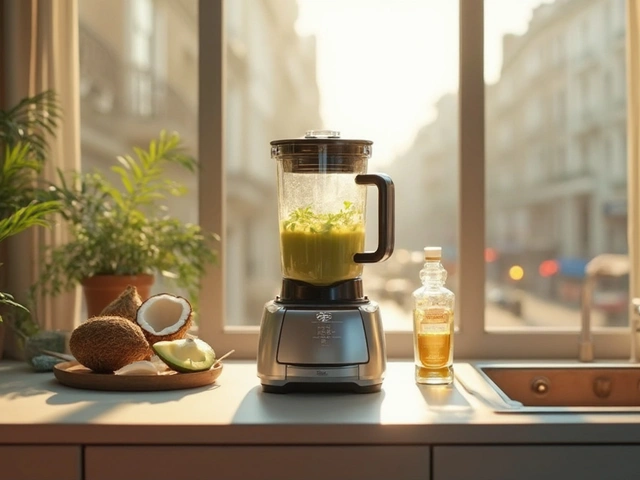
What Happens During an FDA Inspection of a Generic Drug Facility?
If you run a generic drug manufacturing plant, an FDA inspection isn’t something you wait for-it’s something you live with. Every day. The FDA doesn’t show up with a surprise visit just to check boxes. They’re looking for proof that your facility consistently makes safe, effective medicines that meet the same standards as brand-name drugs. And they’ve got a clear system to do it.
Inspections are based on risk. A facility making high-volume, low-risk generics might get inspected every few years. One that’s had past issues, makes complex injectables, or has a history of data gaps? That site could be on the radar every 6 to 12 months. The FDA uses a multi-criteria model that weighs everything from consumer complaints to supplier reliability. It’s not random. It’s calculated.
The Six Systems the FDA Looks At
Every inspection follows the same structure: the six-system approach. These aren’t optional checklists-they’re the backbone of Current Good Manufacturing Practices (CGMP), spelled out in 21 CFR Part 211. The FDA evaluates:
- Quality System - Always reviewed. This is your quality unit’s authority, training records, deviation management, and how you handle complaints. If your quality team doesn’t have real power, you’re already in trouble.
- Facilities and Equipment - Clean rooms, humidity controls, equipment calibration logs. They’ll walk through your production floor and ask: "Can this machine consistently produce what you say it can?"
- Materials - Where do your raw ingredients come from? Do you test them? Do you have qualified suppliers? They’ll pull your vendor qualification files and check if your incoming material testing matches your approved methods.
- Production - Are your processes validated? Do batch records match what’s in your application? They’ll compare your actual production steps with what you submitted to the FDA. Any deviation? You better have a documented reason.
- Packaging and Labeling - One wrong label on a pill bottle can cause harm. They’ll check your label reconciliation logs, barcode scanning, and how you prevent mix-ups between similar-looking drugs.
- Laboratory Control - This is where many facilities stumble. Are your analytical methods validated? Are stability samples stored exactly as your application says? Are your lab technicians trained? And most importantly-do your records show real data, or edited numbers?
They don’t inspect all six every time, but they always check Quality. Then they pick two or three others based on risk. If your facility makes a high-risk product like an inhaler or sterile injection, expect heavy focus on production and lab controls.
What’s a Form FDA 483? And Why Does It Matter?
If the FDA finds something wrong, they don’t yell. They write it down. On Form FDA 483. This isn’t a citation. It’s an observation. But it’s serious. Each item lists the exact regulation it violates-like 21 CFR 211.22(a) for a weak quality unit, or 211.194(a) for missing stability data.
They list observations in order of severity. The first item is the biggest concern. The last? Might be a typo in a logbook. But don’t ignore the last one. The FDA remembers everything.
You have 15 business days to respond. Your response isn’t just an apology. It’s a detailed plan: what you found, why it happened, how you fixed it, and how you’ll prevent it again. A weak response-"We’ll train our staff better"-gets ignored. A strong one? Shows root cause analysis, updated SOPs, retraining records, and effectiveness checks.
Pre-Approval Inspections (PAIs): The Make-or-Break Moment
Before the FDA approves your generic drug, they send a team to your facility. This is a Pre-Approval Inspection. It’s not a formality. It’s your final exam.
They’re asking three questions:
- Is your facility ready to make this drug at commercial scale?
- Is what you told them in your application actually true on the floor?
- Is all your data complete and accurate?
They’ll compare your batch records to your application. They’ll check if your analytical methods match what you filed. They’ll verify that your stability samples are stored in the exact conditions you described. One mismatch? Approval gets delayed-sometimes for months.
Companies that fail PAIs often did so because they assumed "close enough" was good enough. The FDA doesn’t care about close. They care about exact.
The New PreCheck Program: A Game Changer
In 2024, the FDA launched PreCheck-a program designed to help manufacturers avoid inspection failures before they even start. Instead of waiting for an unannounced visit, you can ask for feedback during facility design, construction, or pre-production.
You submit a Type V Drug Master File (DMF) with details on your layout, quality systems, and how you manage risk. The FDA reviews it, gives you feedback, and tells you if your plans are likely to pass inspection. It’s not a guarantee, but it’s the closest thing to a preview.
Companies using PreCheck report fewer 483s and faster approvals. It’s not a shortcut. It’s a safety net. And for manufacturers trying to bring new generics to market, it’s becoming the standard.
What the FDA Doesn’t Tell You (But You Need to Know)
The FDA doesn’t just look at your documents. They look at your culture. Do your operators speak up when something’s wrong? Do your supervisors review data before signing off? Is your quality unit respected-or sidelined?
They’re trained to spot signs of a broken quality culture: missing signatures, backdated logs, deleted files, or employees who can’t explain their own procedures. Data integrity isn’t just about computer systems. It’s about honesty.
Also, inspections can be unannounced. Especially if you’ve had past issues or if someone tipped off the FDA about a problem. You can’t just clean up the day before. You have to be ready every day.
What Happens After the Inspection?
After the inspection, the FDA writes an Establishment Inspection Report (EIR). This is their official record. It includes everything they saw, every observation, and their final judgment: acceptable or unacceptable.
If it’s acceptable? You’re good. You’ll hear nothing more unless they come back.
If it’s unacceptable? You’ll get a warning letter. This is serious. It’s public. It’s on the FDA website. And if you don’t fix it, they can block your product from entering the U.S. market.
But here’s the good news: in 2023, over 90% of inspections found facilities to be in acceptable compliance. Most companies pass. But they pass because they’re prepared-not because they got lucky.

How to Prepare (Without Going Crazy)
You don’t need to hire consultants. You don’t need to spend millions. You just need to be consistent.
- Keep your SOPs updated and your staff trained.
- Run mock inspections every quarter. Pretend the FDA is there. See what they’d find.
- Make sure your quality unit has real authority-and that they use it.
- Don’t let your lab or production team work in silos. Communication is key.
- Document everything. If it didn’t happen on paper, it didn’t happen.
And remember: the goal isn’t to pass an inspection. The goal is to make medicine that patients can trust. If you do that, the inspection will follow.
What Comes Next? Post-Warning Letter Meetings
If you’ve received a warning letter, the FDA now offers Post-Warning Letter Meetings (PWLMs). These are scheduled discussions where you can present your corrective actions and get direct feedback from the agency before they decide whether to take further action.
This isn’t a loophole. It’s a second chance. But you need to come prepared-with data, evidence, and a clear plan. The FDA isn’t here to punish. They’re here to protect patients. If you show them you’re serious, they’ll work with you.
Are FDA inspections announced in advance?
Most inspections are unannounced, especially for facilities with higher risk profiles or past compliance issues. However, Pre-Approval Inspections (PAIs) are scheduled in advance because they’re tied to a drug application. Routine surveillance inspections, on the other hand, are typically surprise visits to ensure ongoing compliance.
How long does an FDA inspection usually last?
Inspections can last anywhere from a few days to over a week, depending on the facility size, complexity of operations, and number of systems under review. A small facility making simple oral tablets might be inspected in 2-3 days. A large plant producing sterile injectables or complex delivery systems could take 5-10 days or more.
What’s the difference between a Form FDA 483 and a warning letter?
A Form FDA 483 lists observations of potential violations during an inspection. It’s not a final decision-it’s a notice. A warning letter is a formal regulatory action issued after the FDA reviews your response to the 483 and determines the violations are serious enough to require official enforcement. Warning letters are public and can lead to import bans or product seizures.
Can a facility be inspected more than once a year?
Yes. Facilities with a history of violations, high-risk products, or recent changes in manufacturing processes may be inspected multiple times per year. The FDA’s risk-based model prioritizes sites that pose a higher potential risk to patient safety, so repeat inspections are common for those with ongoing issues.
What happens if a facility fails an inspection?
If the FDA determines a facility is not in compliance with CGMP standards, they may issue a warning letter. The facility must then submit a detailed corrective action plan. If the response is inadequate or the issues persist, the FDA can refuse to approve new drug applications, block imports, or even initiate legal action. In severe cases, the facility may be placed on an Import Alert, preventing any of its products from entering the U.S.
Is the FDA’s inspection process the same for generic and brand-name drugs?
Yes. The same CGMP regulations apply to both generic and brand-name drug manufacturers. The FDA holds both to the same standards for quality, safety, and consistency. The only difference is that generic manufacturers must also prove their product is bioequivalent to the brand-name version-something the inspection doesn’t directly test, but the application data must support.
How can a facility improve its chances of passing an inspection?
Focus on quality culture, not just paperwork. Train staff to understand why procedures matter, not just how to follow them. Keep records accurate and complete. Run internal audits and mock inspections regularly. Use the FDA’s PreCheck program to get feedback before you start full production. Most importantly, never try to hide or manipulate data-inspectors are trained to spot it.
Final Thought: It’s Not About Passing-It’s About Trust
Every pill, every injection, every inhaler made in a generic facility ends up in someone’s hand. Maybe it’s a senior on a fixed income. Maybe it’s a child with a chronic condition. They don’t care if your facility is big or small. They care if the medicine works-and if it’s safe.
The FDA’s inspection process isn’t about catching you out. It’s about making sure you’re doing right by the people who depend on your work. If you treat every day like an inspection day, you won’t just pass the audit. You’ll earn real trust.






I swear, the FDA walks in like they're judging your life choices. One time my lab tech forgot to sign a logbook and we had to shut down for three days. Just... one signature. I'm not even mad, just impressed they noticed.
This is one of the clearest breakdowns I've seen. The six-system approach is everything. Quality isn't a department-it's the heartbeat. If your QUnit doesn't have teeth, you're already losing.
Man, I remember when we first started exporting generics to the US. We thought our paperwork was solid-until the FDA came and asked why our stability chamber had a different temp than what we filed. We panicked. Turned out we’d just mislabeled the calibration sticker. But they still made us redo the whole batch. Lesson learned: if it’s not documented, it didn’t happen. And if it’s documented wrong? Even worse.
I’ve been in this game for 22 years. The FDA doesn’t care if you’re small or big. They care if your data is real. I’ve seen labs delete files, backdate logs, and blame ‘human error’-and then wonder why they got a warning letter. It’s not about being perfect. It’s about being honest. And if your culture rewards hiding mistakes instead of fixing them? You’re not ready. Period.
The PreCheck program is a game-changer. We submitted our layout and quality controls last year and got feedback that saved us six months. They pointed out a flaw in our airlock design we’d missed. We fixed it before construction. No 483s. No delays. Just good engineering. Why wouldn’t you use it?
There’s a quiet truth here: inspections aren’t about punishment. They’re about protection. Every pill you make could be someone’s only hope. I’ve held my mother’s hand while she took her generic blood pressure med. She didn’t care if it cost $3 or $30. She cared if it worked. That’s the real metric. Not compliance. Not paperwork. Trust.
Let me tell you about the time we got flagged for a labeling mix-up. Two drugs looked identical, and one batch got mislabeled. We had 12,000 bottles. We caught it because our QA lead, who had been there since 2010, noticed the font was slightly off on the barcode area. She didn’t just report it-she dug into the printer logs, found the operator who changed the template without approval, and then retrained the whole shift. That’s the kind of culture you need. Not just SOPs. People who care. And yeah, the FDA noticed. We got zero 483s. Because we fixed it before they even walked in.
So the FDA is basically the school principal who shows up unannounced and checks your lunchbox for snacks you weren’t supposed to have? And if you have a chocolate bar, you get suspended for a year? I mean, I get safety, but this feels like overkill. Why not just trust people?
Trust is earned through consistency. Not goodwill.
The philosophical underpinning of CGMP is not merely procedural compliance but the ontological assertion that human fallibility must be architecturally mitigated. The FDA’s inspectional framework is thus a hermeneutic of accountability, wherein data integrity becomes not a regulatory requirement but an ethical imperative rooted in the phenomenology of patient vulnerability.
soooo... we're all just supposed to be perfect 24/7? like, my lab tech was sick last week and forgot to log a temp reading. big deal? the FDA is gonna shut us down for that? lol
I work in a small plant in Hyderabad. We don’t have fancy software. We have a whiteboard, a notebook, and a team that shows up early. We do mock inspections every Friday. Last month, we caught a typo in a batch record that had been there for 6 months. We fixed it. No one yelled. We just said, 'Good catch.' That’s how you build trust. Not fear. Not audits. Just people who care.